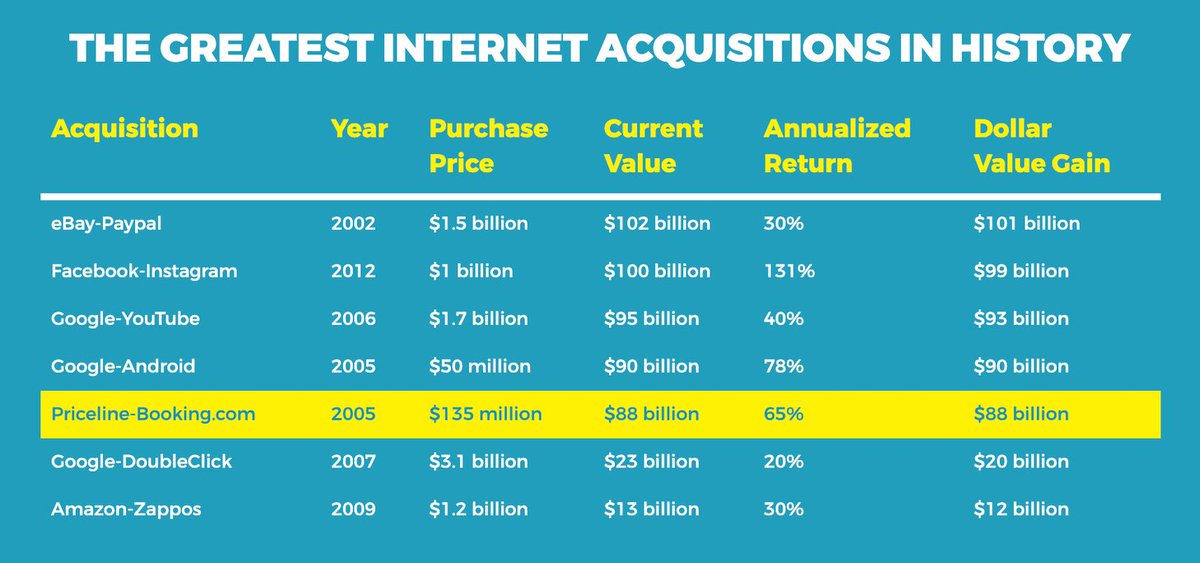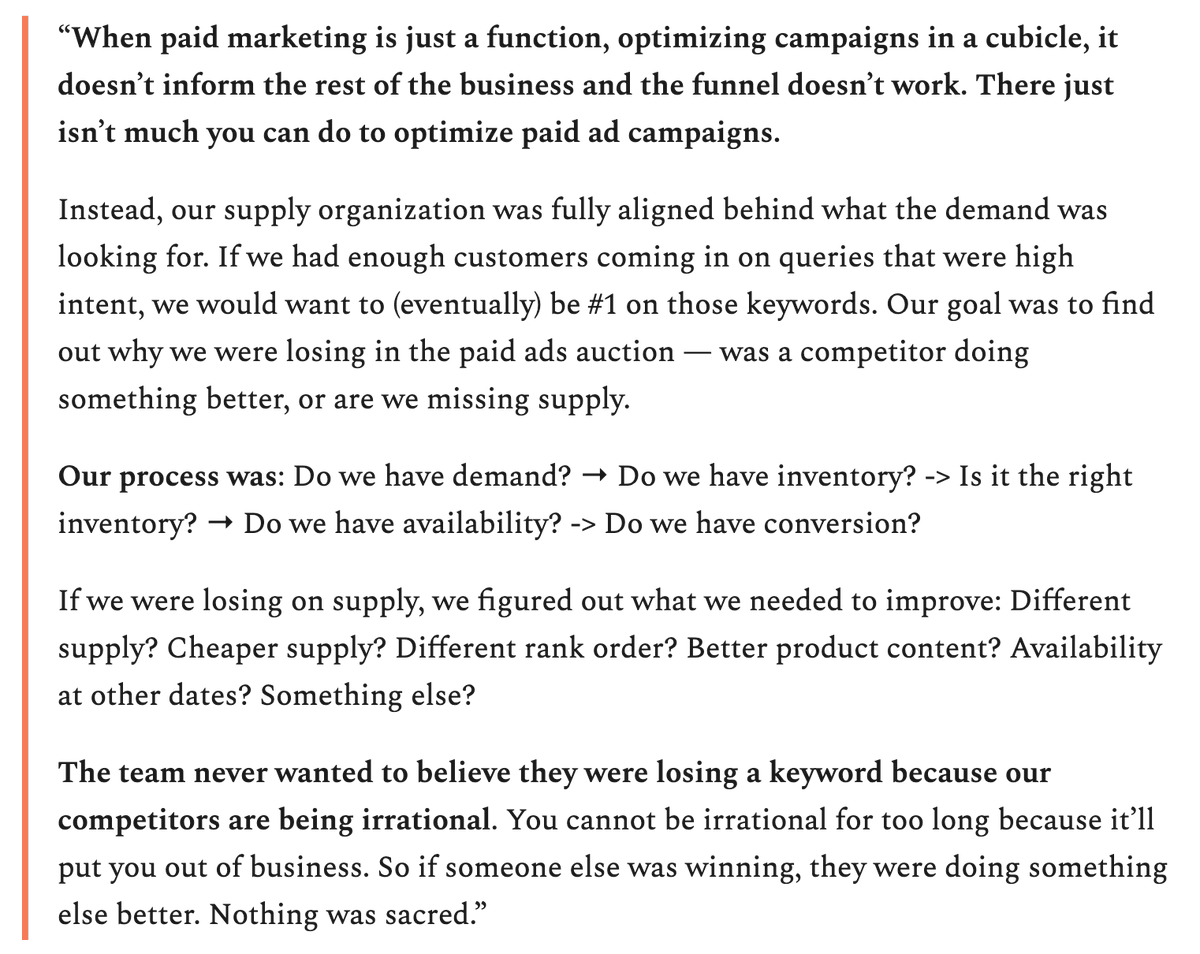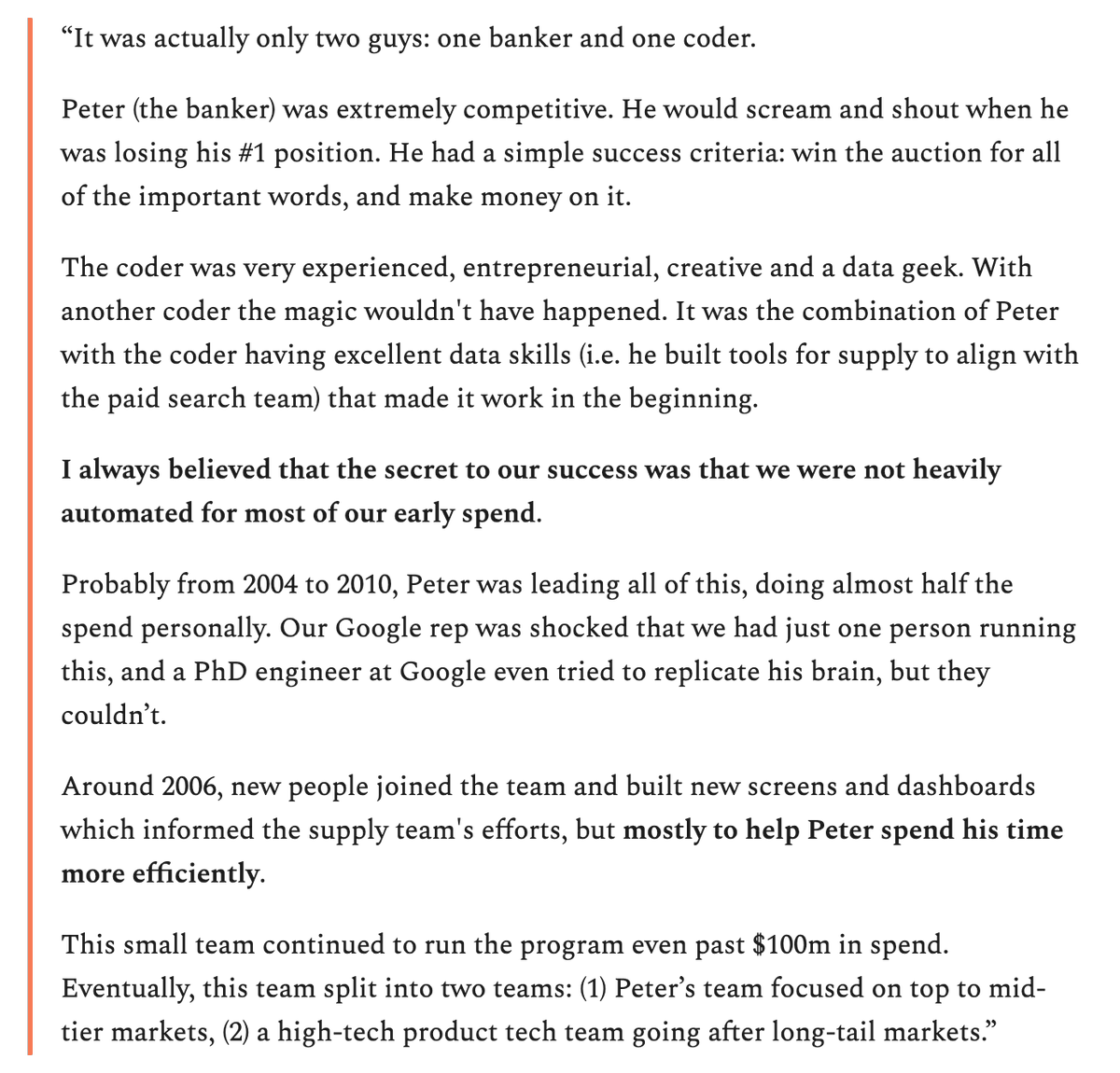
Looking back at the most successful consumer startups of the last 10 years — most companies achieved initial scale by excelling at just one of three growth "lanes":
1. Performance marketing (e.g. FB ads)
2. Virality (e.g. WOM, invites)
3. Content (e.g. SEO)
👇 Read on 👇
1. Performance marketing (e.g. FB ads)
2. Virality (e.g. WOM, invites)
3. Content (e.g. SEO)
👇 Read on 👇
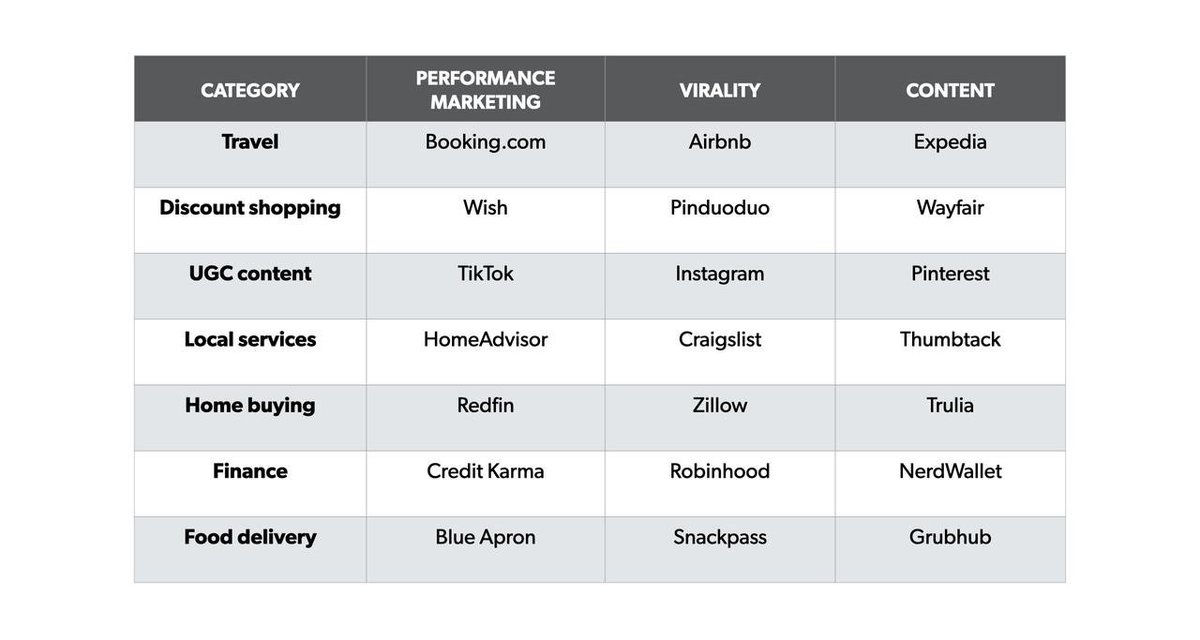
1/ There are other tactics to boost growth (e.g PR, conversion, brand marketing), and other growth lanes (sales and partnerships), but these three lanes have been the only reliable paths for long-term and sustainable consumer business growth.
2/ Why are there so few ways to grow? Because there very few ways for people to find out about new products. You hear about it from a friend (i.e. virality), you come across it while doing something else (i.e. content, perf marketing), or you get contacted directly (i.e. sales).
3/ The good news is that you generally only need to excel at one lane to build a successful business. The bad news is that it won’t be easy.
Once you get to even moderate scale, each of these lanes becomes highly competitive.
Once you get to even moderate scale, each of these lanes becomes highly competitive.
4/ Ok, so there are 3 lanes and you need to win one of these lanes. How do you pick, and win, a lane?
Here's a 3-step framework:
1. Validate that a lane is right for you
2. Commit the necessary resources to give the lane a real shot
3. Scale the investment to become world-class
Here's a 3-step framework:
1. Validate that a lane is right for you
2. Commit the necessary resources to give the lane a real shot
3. Scale the investment to become world-class
5/ STEP 1: VALIDATE
As cheaply as possible validate that a given lane is right for your business. There are two complementary approaches to doing this:
Approach 1: Determine which lane is a natural fit for your business model
Approach 2: Look at your data
As cheaply as possible validate that a given lane is right for your business. There are two complementary approaches to doing this:
Approach 1: Determine which lane is a natural fit for your business model
Approach 2: Look at your data
5b/ Approach 1: Determine which lane is a natural fit for your business model
Performance Marketing is a natural fit if:
✅ You generate revenue directly from new users, which you can then use to fund more marketing
✅ Customers are not looking for your product
Performance Marketing is a natural fit if:
✅ You generate revenue directly from new users, which you can then use to fund more marketing
✅ Customers are not looking for your product
5c/ Virality is a natural fit if:
✅ Your product is better when your friends or colleagues are using it (e.g. Snapchat)
✅ The product is innately fun to share (e.g. travel photos, homes for sale)
✅ Your product is better when your friends or colleagues are using it (e.g. Snapchat)
✅ The product is innately fun to share (e.g. travel photos, homes for sale)
5d/ Content is a natural fit if:
✅ Your users naturally generate public content (e.g. reviews) when using your product, which you can use to attract new users
✅ You have a lot of unique data (e.g. restaurants in Seattle), which you can turn into rich auto-generated pages
✅ Your users naturally generate public content (e.g. reviews) when using your product, which you can use to attract new users
✅ You have a lot of unique data (e.g. restaurants in Seattle), which you can turn into rich auto-generated pages
5e/ @onecaseman wrote the definitive post on this framework for the First Round Review which includes this handy guide
firstround.com/review/pintere…
firstround.com/review/pintere…

5f/ Validate Approach 2: Look at your data
✅ Paid marketing: Your tests generate paying customers with a healthy payback period
✅Virality: Over 50% of your new customer acquisition today is WOM, customers are naturally telling their friends and family about your product
✅ Paid marketing: Your tests generate paying customers with a healthy payback period
✅Virality: Over 50% of your new customer acquisition today is WOM, customers are naturally telling their friends and family about your product
5g/ ✅ Content: There is a high volume of keywords that are relevant to your product, and these keywords are not dominated by competitors that will be difficult to unseat.
6/ STEP 2: COMMIT
Once you’ve validated a channel, the next step is to commit to the lane. Most companies underestimate how large and disciplined the effort will need to be to turn any of these lanes into a superhighway.
Once you’ve validated a channel, the next step is to commit to the lane. Most companies underestimate how large and disciplined the effort will need to be to turn any of these lanes into a superhighway.
6b/ Committing to a lane generally includes doing two things, both of which can be scary, particularly early in a company’s life:
✔️ Dedicating a significant amount of cross-functional resources to the effort.
✔️ Influencing the core product roadmap and customer experience
✔️ Dedicating a significant amount of cross-functional resources to the effort.
✔️ Influencing the core product roadmap and customer experience
6c/ "We chose deliberately to put the entirety of our engineering, product, design, marketing, and operations resources - which were maybe 12 people at the time - against success in this one channel. It was a company betting decision." – Thumbtack, @sanderdaniels 
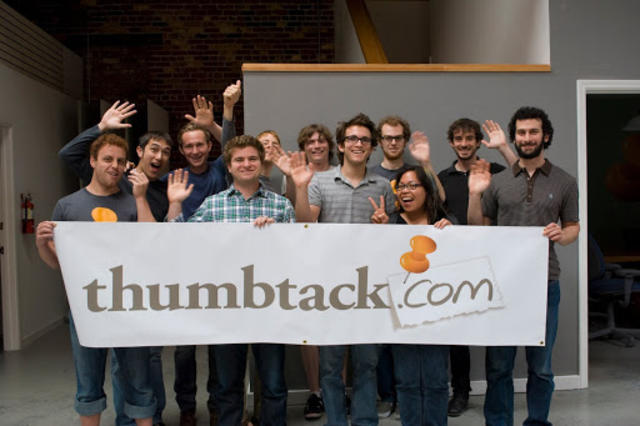
6d/ "We recruited a PM, a designer, and three engineers, found an Airbnb, booked it, and did a one week offsite where we worked together super closely. And that one week laid a super solid foundation for us to build on going forward." - Airbnb, @gustaf 

7/ STEP 3: SCALE
Once you've committed to a lane and start to see meaningful results, the next phase is to become world-class at that lane. The hallmark of this third stage is overcoming diminishing returns.
Once you've committed to a lane and start to see meaningful results, the next phase is to become world-class at that lane. The hallmark of this third stage is overcoming diminishing returns.
7b/ Virtually every customer acquisition channel becomes harder over time because you are acquiring lower and lower intent customers. This is often referred to as the S-curve of growth.
sequoiacap.com/article/evolut…
sequoiacap.com/article/evolut…
7c/ For paid marketing, this typically means that your customer acquisition cost will increase over time. For SEO, you’ll have to start targeting less relevant keywords and lower intent customers, which will result in lower conversions rates.
7d/ And for virality, the percent of potential customers that haven't already heard of and want your product will reduce over time, so you’ll see a degradation in K-factor (or the number of additional customers each new customer refers) over time.
7e/ Scaling your customer acquisition channels requires outrunning the challenges of diminishing returns. Want to build a world-class company? You need to become better and better at competing in your lane.
8/ The biggest customer acquisition mistake companies make is underestimating the time and effort it takes to make a lane really work, and spreading their efforts too thin as a result. Don't make this mistake. Remember, all it takes is one highly successful lane to win the race.
9/ Finally, here is a visual representation of the framework that we’ve been building along the way which you can reference as you’re making decisions at each step. 
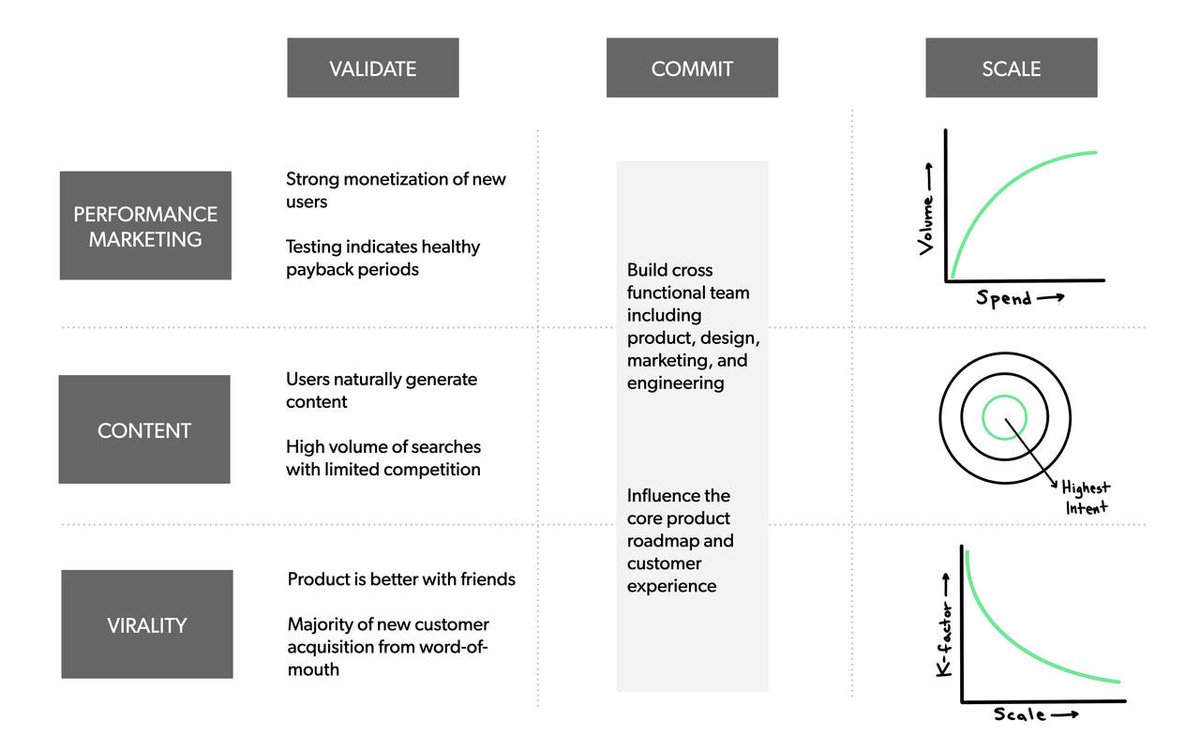
10/ For much more on this topic, including three in-depth case studies of how @thumbtack @Airbnb and @bookingcom worked through these three steps, make sure to check out the full post by @danhockenmaier and I firstround.com/review/drive-g…
11/ Lastly, a huge huge thank you to @sanderdaniels @gustaf @ajknws @danhilltech @onecaseman @bbalfour and the @firstround crew for their contributions to this post.
• • •
Missing some Tweet in this thread? You can try to
force a refresh

